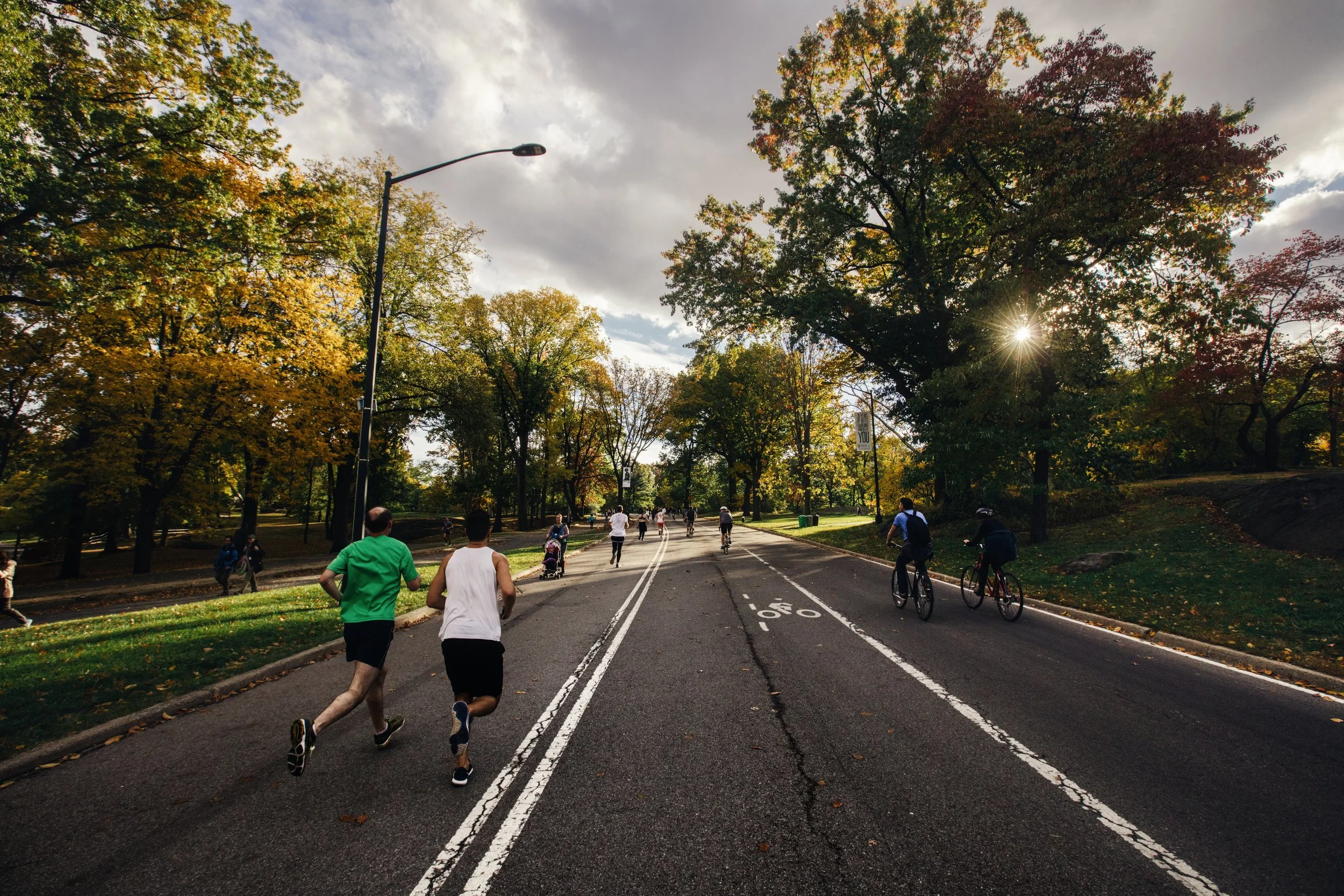At our physical therapy clinics in New York City and Irvington, we talk a lot about the importance of gait and stride when running. We should also mention it's just as important to train your gait when walking in your day-to-day lives. This article from Brian Dorfman is a good one for quickly understanding the importance of gait analysis for everyone, athlete or not.
The Importance of Gait
Walking correctly is essential for preventing and resolving lower back and leg issues. Yet, it can be difficult to implement. Think about how many steps a person in their 40s or 50s has taken in a lifetime. The existing biomechanics are very ingrained. We don’t think about walking. We just do it.
I can’t tell you how many times I’ve addressed walking mechanics with people who come to Dorfman Kinesiology for other issues. Pain and discomfort in the lower back, knees, ankles and feet often involve a gait adjustment as part of the solution.
One of the most common problems I see with gait is the tendency to elevate the hip/pelvic girdle to lift the leg. The motion should be more of a hinging of the hip joint rather than a lift. The hip is made to hinge and the hip joint can deal with the repetition. The lower back, on the other hand, will be compressed with this manner with walking. It will cause problems over time. Check out this short video for a demonstration of this biomechanic error along with clear and simple tools to fix it. Most importantly, the pelvic girdle should stay level. It should not rise and fall or sway as you walk.
Another common walking mistake is when the foot gets in front of the body. We have a choice when we walk. Either the foot is in front or the torso is in front. When we follow the weight of the body it’s called potential energy. The body has the weight to go forward. The foot is not intended to lead the way.
In addition to these two situations, there’s a whole array of possible misalignments of the foot, ankle, knee or hip. There are knees that go in and knees that go out. Feet that fall in or fall out. Some people will land on the ball of their foot or land on their heel. For seniors there are issues of coordination, balance, rhythm and timing.
Gait work is also important for athletes who have been injured and then compensate for the injury in their walk. Gait will make a huge difference in the structural integrity of the whole system.
Fortunately, all of these gait issues can be assessed and addressed effectively by a qualified practitioner in a minimal amount of time.
I don’t want to mislead you, however. It is challenging for individuals to learn to change their gait. And it’s situational. There are people who are more coordinated, who have more mind-body connection. For these individuals it’s easier to make the required adjustments. For others, not so much.
On the other hand, it’s easy for a practitioner to help someone on his or her gait. It’s easy to learn how to work with gait. I recently taught a workshop for yoga teachers on assessing and adjusting gait and they picked it up very quickly. To simplify things I created 6 exercises to address the 6 common types of gait problems. One exercise for each problem.
If you are a massage therapist, athletic trainer or coach, yoga teacher or anyone else working with people with ankle, knee, hip or back issues, I can not emphasize enough the importance of gait work as part of any strategy for addressing pain and discomfort of the lower body while preventing future problems.
Those of us who can walk hope to keep walking for a long time. We walk thousands of hours in a lifetime. The effects of biomechanics are cumulative. The benefits of refining our gait are enormous.
In my next article I will lay out more assessment techniques and exercises to correct gait imbalances. In the meantime, be sure to keep your pelvic girdle down and lead with your torso. Pay attention to your gait, fine-tune your mechanics and you will feel better forever.
Do you suffer from chronic pain and difficulty walking around town? As a New Yorker your ability to get from the Upper West Side to Wall Street is imperative, and we can help make it as easy as pie.

